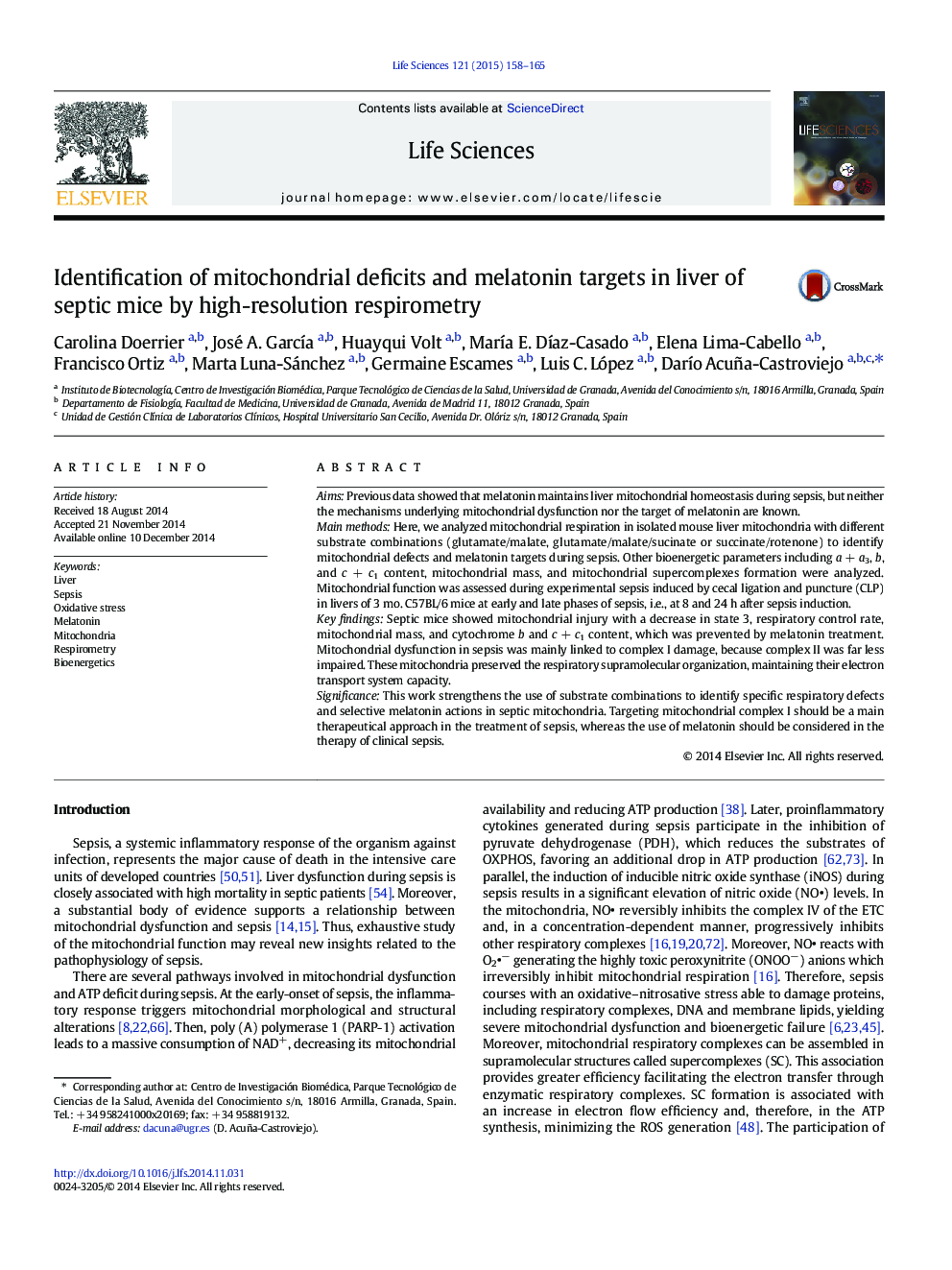| Article ID | Journal | Published Year | Pages | File Type |
|---|---|---|---|---|
| 5841837 | Life Sciences | 2015 | 8 Pages |
AimsPrevious data showed that melatonin maintains liver mitochondrial homeostasis during sepsis, but neither the mechanisms underlying mitochondrial dysfunction nor the target of melatonin are known.Main methodsHere, we analyzed mitochondrial respiration in isolated mouse liver mitochondria with different substrate combinations (glutamate/malate, glutamate/malate/sucinate or succinate/rotenone) to identify mitochondrial defects and melatonin targets during sepsis. Other bioenergetic parameters including a + a3, b, and c + c1 content, mitochondrial mass, and mitochondrial supercomplexes formation were analyzed. Mitochondrial function was assessed during experimental sepsis induced by cecal ligation and puncture (CLP) in livers of 3 mo. C57BL/6 mice at early and late phases of sepsis, i.e., at 8 and 24 h after sepsis induction.Key findingsSeptic mice showed mitochondrial injury with a decrease in state 3, respiratory control rate, mitochondrial mass, and cytochrome b and c + c1 content, which was prevented by melatonin treatment. Mitochondrial dysfunction in sepsis was mainly linked to complex I damage, because complex II was far less impaired. These mitochondria preserved the respiratory supramolecular organization, maintaining their electron transport system capacity.SignificanceThis work strengthens the use of substrate combinations to identify specific respiratory defects and selective melatonin actions in septic mitochondria. Targeting mitochondrial complex I should be a main therapeutical approach in the treatment of sepsis, whereas the use of melatonin should be considered in the therapy of clinical sepsis.
